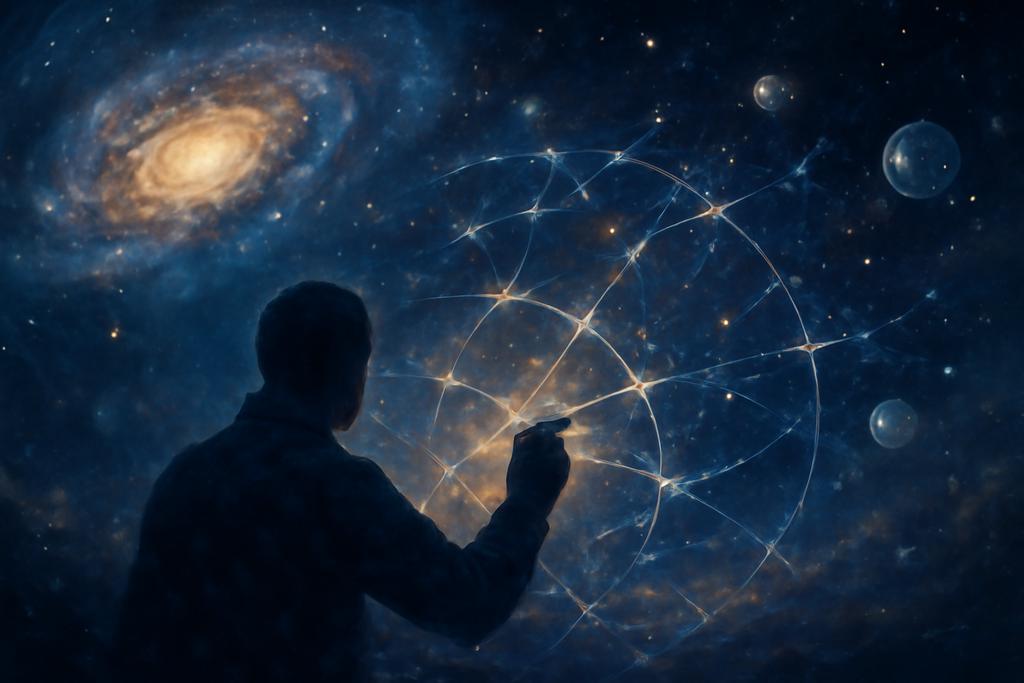Peering into the Universe’s Murky Depths
The universe, in its breathtaking vastness, presents us with a cosmic puzzle. We can see the luminous galaxies, the shimmering cosmic microwave background, but a significant portion of the universe’s matter remains stubbornly hidden, shrouded in mystery. This ‘missing’ matter, known as baryonic matter (the stuff that makes up you, me, and everything we see), is a crucial piece of the cosmological puzzle. Understanding its distribution and thermal properties is vital to building accurate models of the universe’s evolution.
The Challenge of Astrophysical Feedback
One of the most significant obstacles to understanding the distribution of baryonic matter is the complex process of astrophysical feedback. Think of it like a cosmic windstorm. Energetic events, such as supernovae explosions and outbursts from supermassive black holes, inject enormous amounts of energy into the surrounding space, pushing and shaping the distribution of gas in galaxies and galaxy clusters. This feedback is poorly understood, introducing significant uncertainty into our cosmological models.
Mapping the Baryons: Multiple Probes
To overcome this, a team of astronomers, led by Pranjal R. S. from the University of Arizona, is using a multi-pronged approach. Instead of relying on a single observational method, they’re combining data from multiple sources – a kind of cosmic triangulation. These sources include the thermal and kinematic Sunyaev-Zel’dovich effects (measuring the way light from the cosmic microwave background is scattered by electrons in the universe’s vast structure), X-ray observations (detecting radiation from hot gas in galaxy clusters), and dispersion measures from fast radio bursts (measuring the way radio signals are delayed as they traverse the universe’s gas).
Halo Models: An Analytical Approach
Analyzing these diverse data sets requires sophisticated theoretical models. The team focused on a type of model called ‘halo models,’ which describe the universe’s structure as a collection of collapsed ‘halos’ – massive concentrations of matter, like cosmic islands. These models offer a simplified way to predict the distribution of matter and baryons, but different models make different assumptions, leading to varying predictions. The researchers compared three such models, evaluating how well they capture the properties of the baryons.
Testing the Models: The Magneticum Simulation
To test the accuracy of the halo models, the astronomers used a powerful tool: the Magneticum cosmological hydrodynamical simulation. This simulation, developed at the Max Planck Institute for Astrophysics, meticulously tracks the formation and evolution of galaxies and galaxy clusters, including the effects of astrophysical feedback. By comparing the predictions of the halo models to the output of the Magneticum simulation, the researchers could assess their strengths and limitations.
Results: A Mixed Bag
The results were a fascinating mix of successes and surprises. All three models could accurately reproduce the large-scale distribution of matter as shown by the power spectra. However, their ability to capture the details of the baryonic distribution – the density, temperature, and pressure profiles of halos – varied considerably. One model, the Schneider19+ model, consistently outperformed the others, providing a reasonably accurate representation of the baryon structure in the simulation. But other models, such as the Mead20+ model, fell short, highlighting the sensitivity of the results to the underlying assumptions.
Implications: Refining Our Cosmic Models
This study provides crucial insights into the strengths and weaknesses of current theoretical models. The discrepancies between the models’ predictions and the simulation’s output underscore the need for further refinement and validation. This research emphasizes the importance of combining multiple observational probes to better constrain the complex physics of astrophysical feedback and improve our understanding of the universe’s large-scale structure. This work highlights the continued importance of large-scale simulations, like the Magneticum project, which serve as critical testing grounds for our theoretical models.
The Future of Cosmic Cartography
The quest to map the universe’s hidden baryons is far from over. Future, more precise observational surveys promise to deliver unprecedented data, demanding even more refined and accurate models. By combining innovative theoretical approaches with increasingly powerful simulations, astronomers are steadily closing in on a more complete picture of the universe’s composition and evolution. The insights gleaned from this research will help to guide the next generation of cosmological models, leading us closer to a deeper understanding of the universe’s intricate workings.










